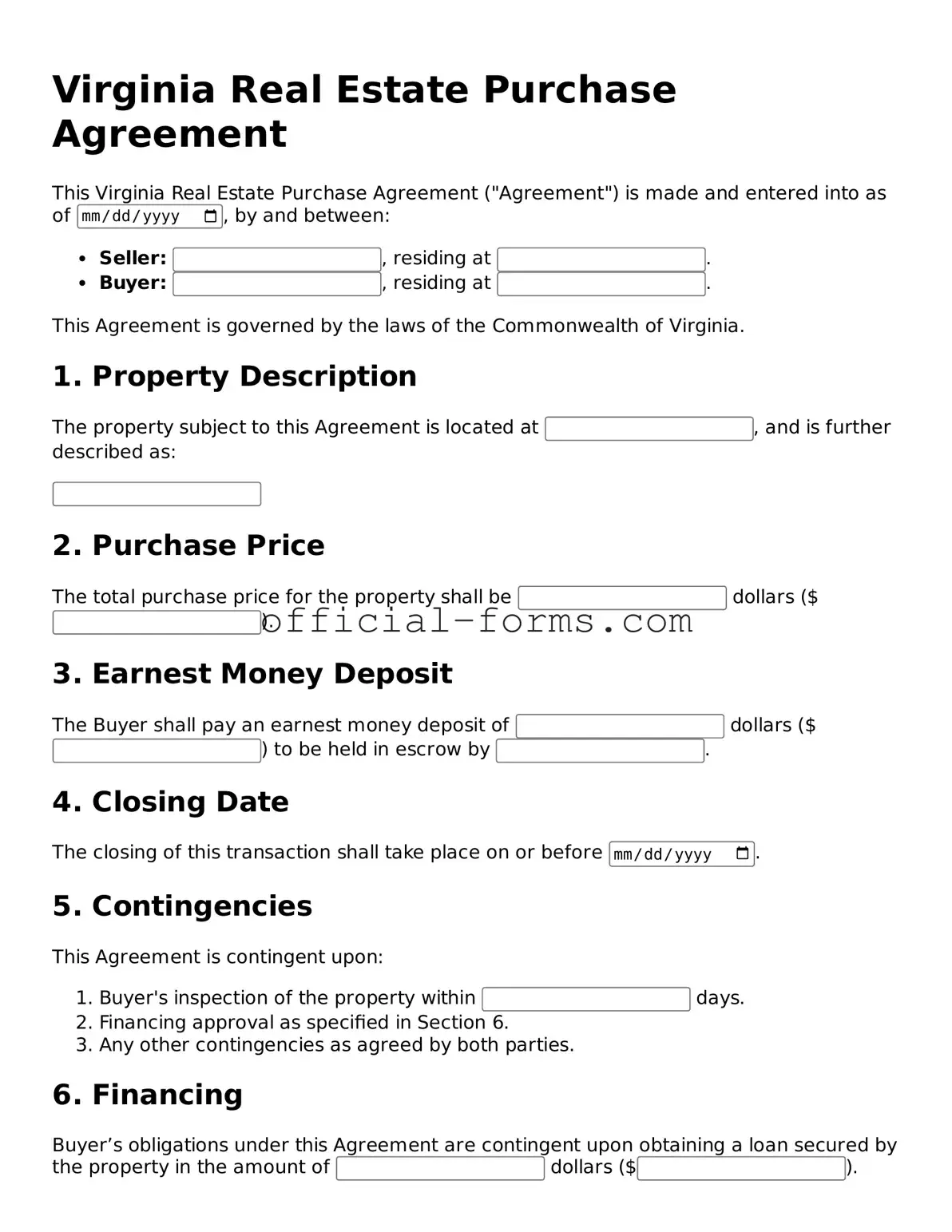Official Virginia Real Estate Purchase Agreement Document
The Virginia Real Estate Purchase Agreement is a legal document that outlines the terms and conditions under which a buyer agrees to purchase real estate from a seller. This form serves as a binding contract, detailing essential information such as the purchase price, property description, and contingencies. Understanding this agreement is crucial for both buyers and sellers to ensure a smooth transaction process.
Open My Real Estate Purchase Agreement Now
